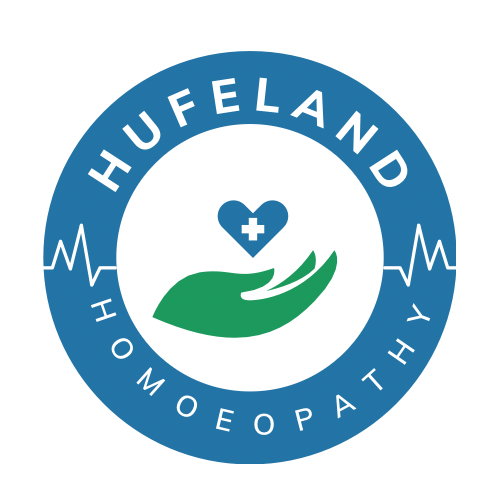- Fathima Roshni N

- Apr 29
- 4 min read
Hand, Foot, and Mouth Disease (HFMD) is a common viral infection that primarily affects children. It's crucial for parents and caregivers to understand this condition in detail. In this blog, we will explore everything about Hand Foot Mouth Disease, including its pathophysiology, causes, symptoms, types, prevention, diagnosis, treatment, and homeopathic management.
Understanding Pathophysiology
HFMD is caused primarily by coxsackievirus A16 and enterovirus 71. The infection usually starts with the virus entering the body through the gastrointestinal tract or respiratory system. Upon entering, the virus begins to replicate, leading to the classic symptoms we associate with the disease.
The infection predominantly manifests as blisters in the mouth, hands, and feet. The blisters result from the host's immune response to the viral invasion. As the virus multiplies, it leads to inflammation that results in the signature rashes and painful lesions.
Causes of Hand Foot Mouth Disease
The primary cause of HFMD is viral, with coxsackievirus being the main perpetrator. Children aged under 5 years are the most vulnerable, as their immune systems are still developing. Moreover, the disease spreads easily in places like daycare centers and schools where children are in close contact.
The virus can be transmitted through:
Direct contact with an infected person's fluid, like saliva or blister fluid.
Touching surfaces contaminated with the virus.
Respiratory droplets from coughing or sneezing.
Parents should remain vigilant during outbreaks in their community and ensure proper hygiene practices.
Symptoms of Hand Foot Mouth Disease
HFMD generally starts with mild symptoms that can often be mistaken for other conditions. Common signs include:
Fever: Often the first symptom, ranging from mild to moderate.
Sore Throat: Accompanied by red and swollen tonsils.
Painful Mouth Sores: Red spots that develop into ulcers.
Rash: Characterized by red spots on the hands, feet, and sometimes the buttocks. The rash can sometimes blister.
Loss of Appetite: Due to painful sores in the mouth.
Most children recover from HFMD in 7 to 10 days, but the symptoms can be uncomfortable.

Types of Hand Foot Mouth Disease
There are several types classified based on the virus causing the infection. While coxsackievirus A16 is the most common, enterovirus 71 has also been identified as a cause. The disease severity can vary, with some infections being mild while others can result in complications like viral meningitis in rare cases.
Prevention Strategies
Preventing HFMD involves good hygiene practices. Here are some actionable recommendations:
Handwashing: Teach children to wash their hands frequently, especially after using the restroom and before eating.
Avoid Close Contact: Keep children away from infected individuals.
Disinfect Surfaces: Regularly clean toys, surfaces, and other items that children frequently touch.
Stay Home When Sick: If a child shows symptoms, it’s essential to avoid contact with other children until they recover.
By implementing these strategies, the risk of HFMD can be significantly reduced.
Diagnosis of Hand Foot Mouth Disease
Diagnosing HFMD is primarily based on clinical features. A healthcare provider will typically conduct a physical examination and ask about symptoms and recent exposure. While tests are rarely needed, they may be conducted in severe cases or if secondary infections are suspected.

Treatment Options
Medical Management
While no specific antiviral treatment exists for HFMD, supportive care is essential. Here are some common recommendations:
Pain Relief: Over-the-counter medications such as acetaminophen or ibuprofen can be given to ease fever and discomfort.
Hydration: Ensuring adequate fluid intake is crucial as mouth sores may make eating and drinking painful.
Topical Treatments: Solutions or gels to soothe painful mouth lesions may also be prescribed.
Homeopathic Management
Homeopathy offers certain remedies that may help in treating HFMD symptoms. Here are ten homeopathic remedies that could be beneficial:
Aconite: For sudden onset of fever and restlessness.
Belladonna: Helpful for high fever and redness of the throat.
Rhus toxicodendron: For itchy rashes and blisters on the skin.
Mercurius solubilis: Effective for painful mouth ulcers and swollen gums.
Apis mellifica: Helps alleviate swelling and itching.
Calcarea carbonica: For children who are sluggish and fatigued.
Hepar sulphuris: Useful for painful, sensitive areas with pus formation.
Arsenicum album: For anxious children who experience restlessness with diarrhea.
Phytolacca: Best for sore throats and swelling in the mouth.
10. Natrum muriaticum: Can help with blisters, especially in the mouth.
It's recommended to consult a professional homeopath before administering these remedies to ensure proper dosage and suitability for your child's condition.
Managing and Supporting Recovery
The recovery from HFMD primarily relies on managing symptoms. Parents can foster a supportive environment by ensuring their child is calm and comfortable. It's essential to monitor the child's condition closely and seek medical help if symptoms worsen or new symptoms arise.
Hand foot mouth disease in children can be distressing, but with proper care and understanding, recovery can be swift.
With time and attention, parents can help their children recover from HFMD, whether through medical or homeopathic approaches. Always remember to consult healthcare professionals if there are any doubts or severe symptoms.





Yorumlar